Вы здесь
Travelers in Zaysan.
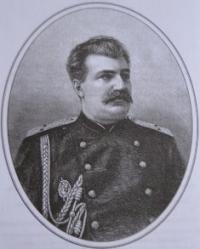
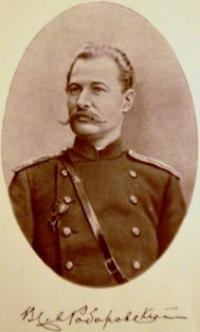
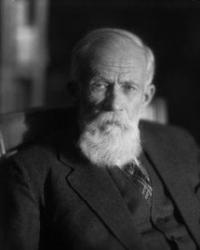
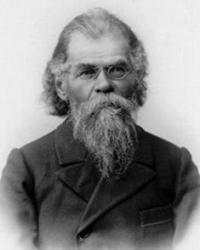
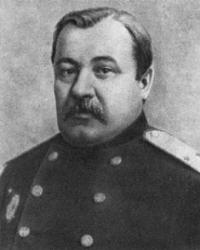
Trip to Zaysan.
“Before reaching the city, in the mountains we admired the unheard-of bell ringing of the Zaisan church for three years; there was a service on the occasion of the feast of the introduction of the Most Holy Theotokos into the church (November 21). As we approached, the ringing became clearer and louder. Soon we were happy to see P.K. Kozlova with Vlasenko and A.S. Khakhlov, my old acquaintance Zaisan and others who had left the city to meet us”
V. Roborovsky. 1895.
Boat Tours on Lake Zaysan.
Each time, getting into the city of Zaysan, I feel the excitement and thrill of a local historian who is partial to the history of his land. There is no other place in the East Kazakhstan region where there would be so many ancient monuments, where in the untouched silence of the provincial town, old streets and houses would be so well preserved.
Thank God, the town did not capture the boom of socialist construction, when barracks-boring buildings of serial buildings were erected on the site of old, having a surprisingly individual look of houses. Merchants' mansions, wooden log houses made of eternal larch, stone or red brick buildings of public institutions.
How pleasing to the eye these unpretentiously decorated houses after contemplating the faceless walls of modern slums! I want to walk endlessly, examining the decrepit and cracked houses from old age. Wouldn't it be interesting to know the history of everyone who lived in it and when, who passed through this street or alley?
After all, so many wonderful people have been here! Pictures of bygone past arise at the sight of all this antiquity. Looking at the quiet streets of the provincial Zaisan, increasingly turning into village streets, it is difficult to imagine that more than a hundred years ago this city was heard by the whole enlightened world, and its name often appeared on the pages of newspapers. This was the era of the great geographical discoveries in Central Asia made by Russian travelers.
The village of Dzhemineiskaya or the Zaisansky military post was founded in 1867 as a border outpost. A few years later it was a village resembling a southern town with mud brick houses and flat roofs, with irrigation ditches and poplars and willows along the streets, with kitchen gardens and gardens.
The town, lying on the outskirts of the vast Russian Empire, almost immediately became the place from which expeditions went to explore the unknown spaces of Central Asia. This was due to the convenient location of the city.
Nearby was the mysterious Dzungaria, poorly studied Mongolia and China, to the south - completely unknown Tibet. A postal route reached Zaysan, the telegraph terminal was located here, and the navigable Zaysan lake with the Topolev cape (70 versts from Zaysan), where steamships from Semipalatinsk went relatively regularly, and from the 90s, Western Siberia was connected by rail with Central Russia.
All this determined the convenience for the formation of expedition caravans here, they returned here after long hikes, loaded with scientific materials - collections of animals, plants, minerals, travel diaries and maps.
The streets of Zaisan saw Nikolai Przhevalsky, Grigory Potanin, Vsevolod Roborovsky, Mikhail Pevtsov, Alfred Brem, Vladimir Obruchev, Vasily Sapozhnikov, Grigory Grumm-Grzhimailo and others. They left here, full of hope and dreams, tired, but happy, weighed down by the priceless burden of scientific discoveries.
Here, going on a long journey, travelers said goodbye to their homeland, and then for many months, and sometimes even years full of hardships and hardships, this town was their constant recollection of their native land, serving as a guiding light marking the end of their difficult journey.
Zaysan was spoiled by visits of famous guests, and given that trade caravans from Mongolia and China passed through it, we can say that life here was in full swing, and the local townspeople did not have to get bored. Caravans, as a rule, stopped on the banks of the Dzhemineyki river near the customs building.
Here they passed customs and veterinary inspection. Crowds of people sometimes gathered to look at caravans that arrived from distant wanderings. If for local inhabitants this was a curious sight, then for the expedition participants there came joyful moments of the beginning of the journey and fulfillment of hopes, or, conversely, exciting moments of meeting with the motherland. Here is how V. Roborovsky describes the return of his expedition in 1895 from East Turkestan, which lasted two and a half years:
“The last night spent in the steppe was alarming: a lot of diverse thoughts about a meeting with dear compatriots in Zaysan, about Petersburg, relatives, acquaintances awaiting us crowded in my head and drove off sleep. Even in complete darkness, everyone had already stood up and sat by the fire, looking forward to a glimpse of the morning dawn in order to move on and soon enter Zaysansk, about which there had been so much coveted conversation about the last month of the trip.
Before reaching the city, in the mountains we admired the unheard-of bell ringing of the Zaisan church for three years; there was a service on the occasion of the feast of the introduction of the Most Holy Theotokos into the church (November 21). As we approached, the ringing became clearer and louder. Soon we were happy to see P.K. Kozlova with Vlasenko and A.S. Khakhlov, my old acquaintance Zaisan and others who had left the city to meet us.
On the outskirts of the city, during the descent from the mountains, we were cordially welcomed by the district chief N.P. Kiryanov and employees of various institutions of Zaysansk. This is not the first time I've met many.
The commander of the Cossack Siberian regiment, he was also the commander of the troops in the city, Colonel Vologodsky, extremely warningly ordered that the premises of the battery commander be prepared for the expedition. Here we had every opportunity to fit ourselves with people and place all our collections.
... Zaysan local military and urban society honored us very cordially, arranging us lunches and evenings. We didn’t have to rest in Zaysan: we shifted collections for transportation on horses and further by rail. The trouble of sending and handing over to the transport office for delivering the collections to St. Petersburg was taken over by the Zaysan mayor A.S. Khakhlov."
Some travelers, for example, Przhevalsky’s constant companion, Roborovsky was in Zaysan three times, and N. Przhevalsky himself twice, in 1877-1878 and 1879, spending a total of four months here. Communication with geographic scientists, with advanced people of his time could not pass without a trace for the provincial Zaysan.
Sons of one of the most famous residents of the city A.S. Khakhlova, who took an active part in the equipment of almost all the expeditions, became prominent scientists; the eldest is Leonid, a microbiologist at the Pasteur Institute in Paris, the middle is Venedikt, a geologist, a professor at Tomsk University, and the youngest is Vitaly, a zoologist who wrote the book Zaysan Basin and Tarbagatai.
In 1876, three expeditions passed through Zaysan at once, one of which - the famous Alfred Brehm and his scientific companion O. Finsch - proceeded in transit from Semipalatinsk to Markakol, and the other two - M.V. Pevtsova and G.N. Potanin were formed here.
Zaysan warmly welcomed foreign celebrations. In their honor, a concert of the Cossack Choir was arranged on the bank of the Dzhemineyki, and in the evening - a firework. All this made a great impression on the German guests who did not expect to meet such a society here.
The expedition of G. Potanin to Northwestern Mongolia was organized by the Imperial Russian Geographical Society, while the participation of M. Pevtsov in his first big trip to China, it can be said, was accidental. To protect a large commercial caravan heading to the Chinese city of Guchen, a Cossack hundred was appointed and Pevtsova was offered to take command over it in order to collect information about the places along which the caravan was to follow.
Exactly one year later, in December 1877, N. Przhevalsky's expedition entered Zaysan (See the essay “N. M. Przhevalsky in Zaysan”). Residents of the border town of their compatriots returning from distant wanderings met with no less interest.
On January 3, 1891, on the streets of Zaysan, the third journey of M.V. Pevtsov in Western China, which he led instead of Przhevalsky, who died in 1888. The caravan carried rich collections and, as Pevtsov himself wrote: “On the streets all the way to the apartment allotted to us crowded crowds gathered to watch the arrival of their compatriots from a long journey across foreign lands”.
Yes, there was something to see, because the caravan was carrying a collection of 200 skins of mammals, 1200 skins and stuffed birds, 150 fish and 300 amphibians and reptiles, as well as large collections of insects, rocks and plants.
Four years later, on November 28, 1895, Zaysan saw the return of another large expedition led by V. Roborovsky. This expedition, which lasted two and a half years, almost ended in tragedy. A stroke occurred on the way with Roborovsky, it was paralyzed, and it took tremendous efforts to finish the journey without succumbing to the disease.
V.V. was his man in Zaysan. Sapozhnikov, and this is understandable, because he devoted almost his entire life to the exploration of Altai. He was in the city at the foot of a wooded Saura in 1899, when he conducted surveys on the Black Irtysh, in August 1906, when he returned from a trip to the Mongolian Altai, and in May 1908, when he was preparing to examine the sources of the Irtysh.
Summer In 1914, producing botanical descriptions of Zaysan Uyezd, V. Sapozhnikov again visited Zaysan, roaming from the pier Topolev Cape to the city he was taken in a car. At the end of May 1903, the expedition of the already famous scientist geographer G.E. Grumm Grzhimailo.
The reason for the trip was the proposal of the Minister of Finance S.Yu. Witte study issues of Russian trade with Mongolia. Grumm-Grzhimailo combined this task with questions of ethnography and the origin of the Turkic and Mongolian peoples that interested him.
Equipping himself with Zaisan Cossacks, on June 2, 1903, he crossed the border at Maykapchagai and moved to Western Mongolia and the Uryankhai Territory (Tuva). In the same year, 1903, exploring Lake Zaysan, as well as the surrounding area and the Saur Mountains, the city was visited by the famous explorer of Kazakhstan (a native of Bolshenarym) A.N. Sedelnikov. Gathering materials for his book “Zaysan”, he continued his travels in Altai in the subsequent 1905, 1906, 1908 and 1910.
V.A. Obruchev, our famous traveler, geologist and author of popular science fiction books, after a long trip to China in 1892-1894, became so interested in Northern Dzungaria, directly adjacent to the Zaysan district, that for three years (1905, 1906 and 1909 ) traveled here, as strongholds, using Semipalatinsk and Zaysan.
And I would like to recall another expedition. In the spring of 1904, at the invitation of Khakhlov, an associate professor at Moscow University, the author of the documentary work “Altai Birds”, ornithologist P. Sushkin came to Zaysan.
His journey, like books, is widely known, but few people now remember and know that, along with a venerable scientist, Sergey Chetverikov, then a student, participated in that expedition. Much later, already in the 1920s, Chetverikov founded the school of modern genetics, which has become the foremost in the world.
Repressed in 1928, the scientist was deprived of the opportunity to engage in his work, but the work was continued by his students who left abroad. Having realized the ideas of their teacher, they became the largest scientists in the USA and Germany.
But also what S. Chetverikov himself managed to do puts him on a par with the most famous biologists of the XXth century. Shortly before his death in 1957, recalling his trip to the Saur Mountains, S. Chetverikov wrote: “With what desire I would again go now, despite my 78 years, to a new locality, so that in the end of my life I would at least once again experience that the excitement from which you choke when you first go fishing in an unfamiliar area promising butterflies unprecedented and uncomfortable before.”.
There were probably other trips and expeditions departing from Zaysan, but one more is worth noting. Returning from a trip to Tibet, on May 29, 1926, a famous artist, traveler and social and political figure N.K. passed through Zaysan Roerich.
The bronze bust of N.M. has long served as a memory of glorious visits and an amazing time of the 19th century. Przhevalsky, set back in Tsarist times. But in the beginning of the 90s already of the XX century, the monument was barbarously destroyed, there was only a peeled pedestal standing in a square trodden by cattle.
They say that one of the local historians keeps a bronze head with an eagle profile in his barn. But it is unlikely that in our time anyone will resist the temptation to hand over expensive metal for the purchase of scrap metal (now there is a monument to some chairman of the village council on this place).
All that remained was the customs building, where the great traveler stayed and where the museum of local lore had been located before. Now it is a private house. Every time I visit this quiet corner, I strive here, but nothing reminds me of the great traveler being here.
And I would like to go into this old brick house, to see the room where Przhevalsky lived, in the form that it was during the time of the traveler. It remains only to stand under the canopy of centuries-old trees and mentally try to imagine what was happening here a hundred or more years ago, to hear the neighing of horses, the cries of the drivers, the voices of tired travelers.
After all, caravans of expeditions stopped right here, on the banks of the talkative Gemineika.
Authority:
Naturalist writer, photo artist, local historian Alexander Lukhtanov.







